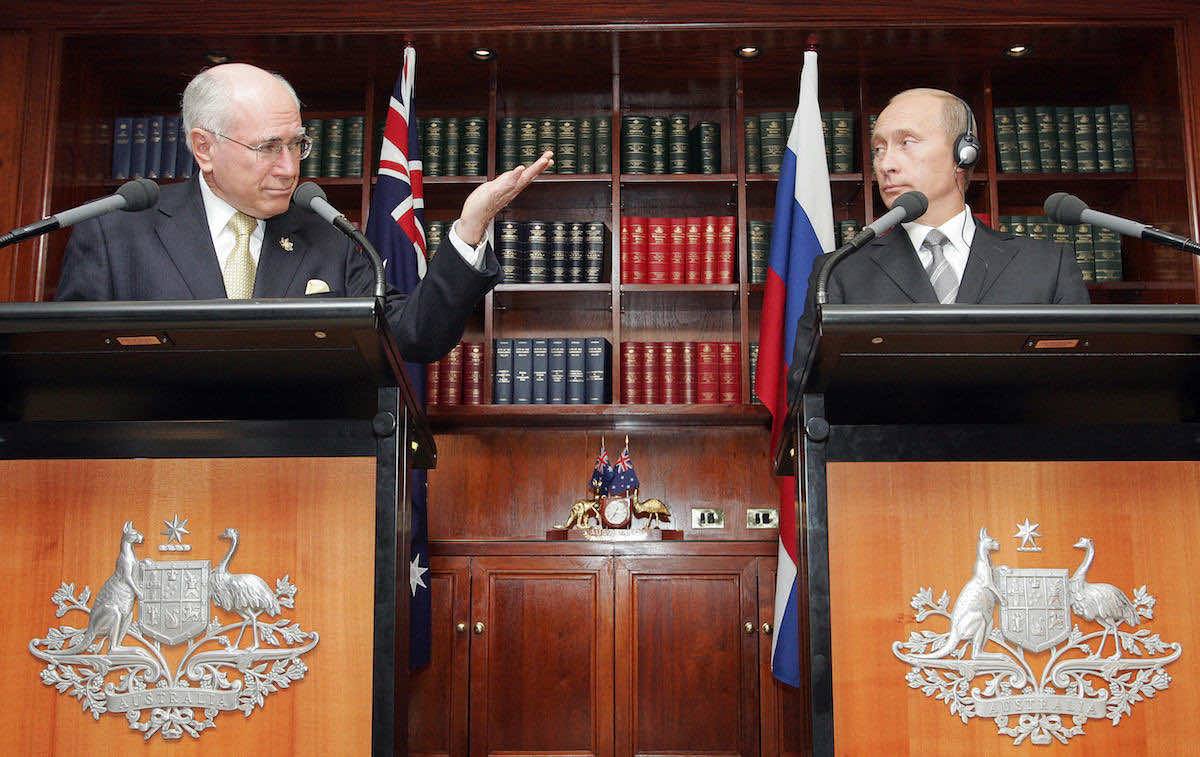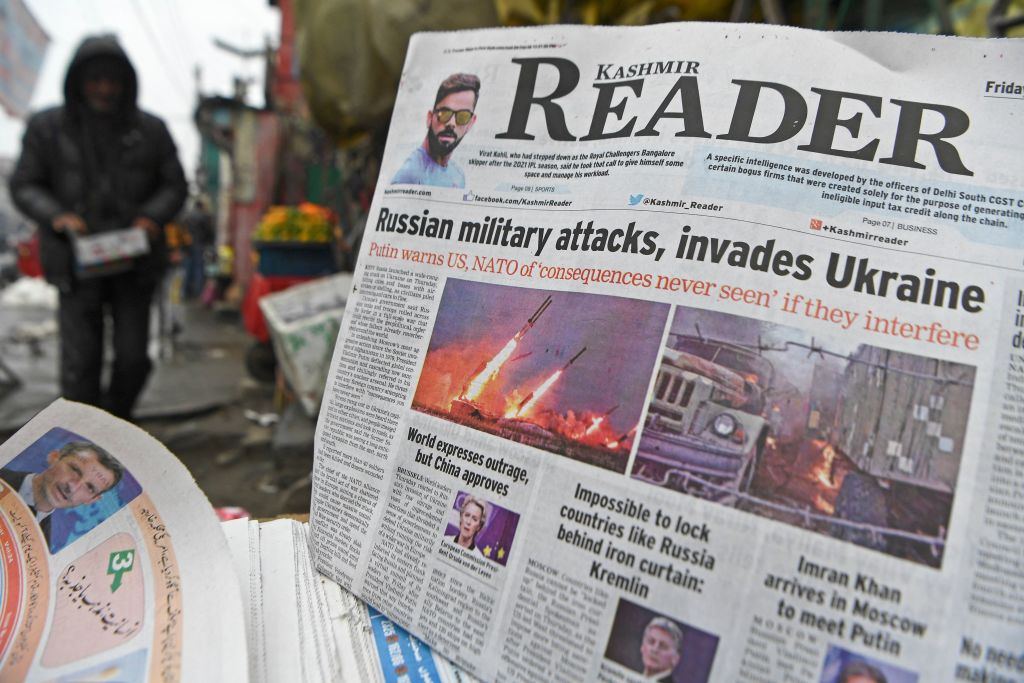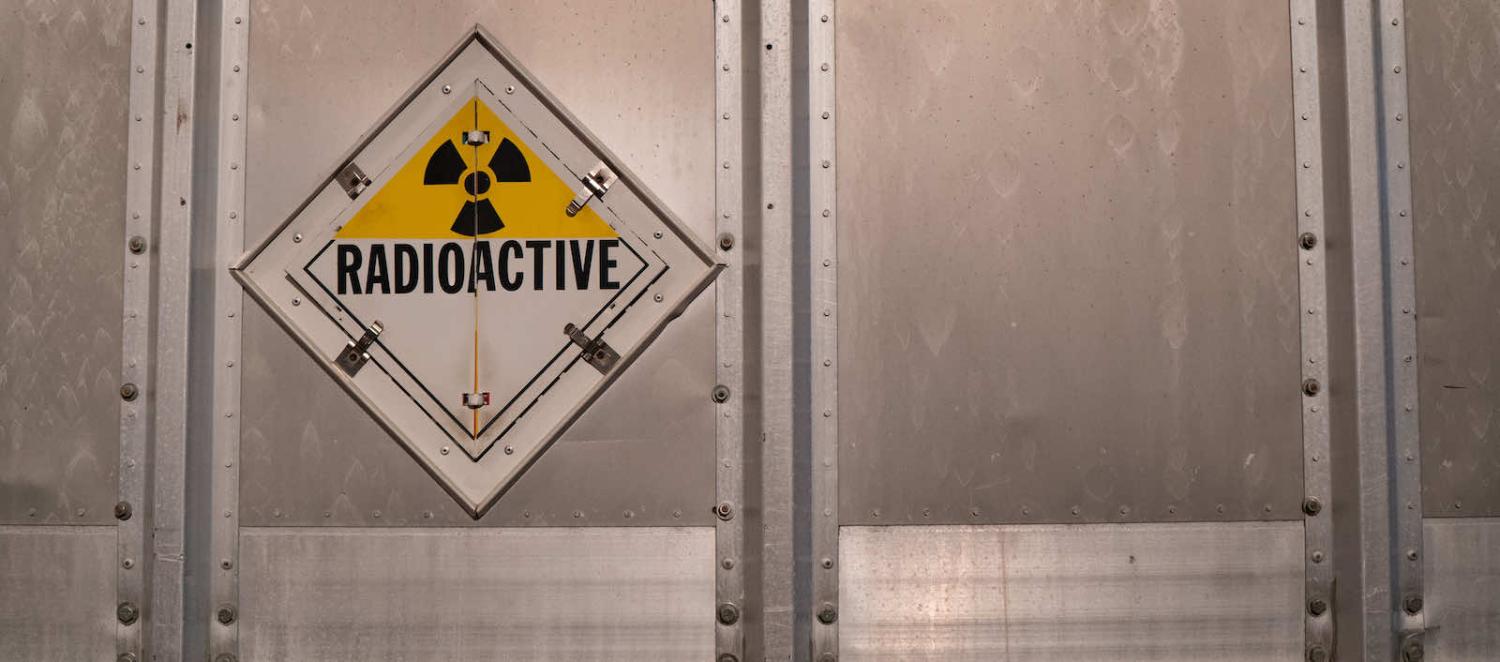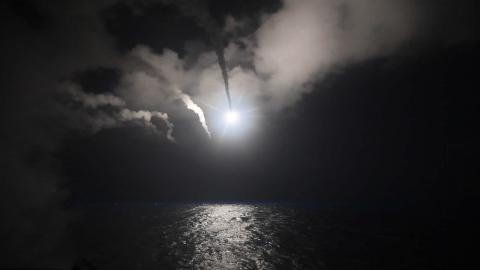“If you’ve looked on the TV into Vladimir Putin’s eyes – he is one tough son of a gun and I don’t think that he cares about what we think.”
Such was the verdict by one Australian federal MP.
But this wasn’t in reaction to news in recent hours about Russian troops swarming across the border with Ukraine. This observation dates all the way back in 2008, when Putin dispatched his forces into another neighbour, Georgia, seizing control of the territories South Ossetia and Abkhazia.
Putin’s aggression back then left Australia with a conundrum – a nuclear sized headache, if you will. And it’s a problem that could now resurface after the invasion of Ukraine.
In 2007, Putin made the first ever trip by a Russian president to Australia, landing in Sydney for the APEC summit. Meeting with then prime minister John Howard, Putin signed a treaty that would clear the way for Australian yellowcake uranium exports to Russia.
The Labor opposition, on the cusp of taking office, backed the deal. Only before the treaty arrangement could be ratified the following year, Putin monstered Georgia.

In September 2008 the Rudd government pulled a handbrake on the yellowcake sales, much to Moscow’s annoyance. The deal was tangled up in parliament’s treaties committee, ostensibly over concern to ensure Australian uranium couldn’t be used to fuel Russia’s nuclear weapons arsenal. “If he changed his mind about the uses to which he was going to put it, I don’t think we’d have any effective comeback at all,” said Labor MP Kelvin Thomson, chair the treaties committee, and he who gazed into Putin’s eyes. But local industry dismissed this fear because of safeguards written into the agreement. The real purpose was to heap more diplomatic pressure on Russia over Georgia.
Almost 18 months passed. With events judged to have settled down, the deal was back on and Australian uranium sales would go ahead. A trial shipment was eventually made. The government was “satisfied the uranium will be used exclusively for peaceful purposes … The risk they might divert nuclear material subject to safeguards from civil programs to nuclear weapons programs is remote.”
Then MH17 was shot down in 2014 by Russian-backed separatists over eastern Ukraine, with 38 Australians among 298 dead.
The government pledged to keep watch on security risks faced by Ukraine for the life of the agreement.
The Abbott government soon suspended Australian uranium sales to Russia as part of a suite of punishments. They never restarted.
This might have been the end of the story except for a fateful decision. As a sign of support Abbott wanted to fly the Australian flag next to Ukraine’s, as he put it. He decided to open an embassy in Kyiv (and privately mused about sending Australian troops to secure the crash site).
Abbott also decided Australia would begin negotiations with Ukraine on a deal to sell uranium.
The “Australia–Ukraine Nuclear Cooperation Agreement” was signed in 2017, clearing the way for Australian uranium exports to Ukraine. In its “National Interest Analysis” provided to parliament, the government argued it:
would provide Ukraine with access to an additional market from which to purchase uranium ore concentrates under commercial contracts, thereby contributing to increasing diversity of supply of nuclear fuel, for which it is currently heavily reliant on Russia – noting that political tensions currently exist between Ukraine and Russia.
Those “political tensions” have now obviously exploded.
When authorising the deal, the treaties committee quizzed the government about safeguards with Ukraine and called for a “suitable contingency plan for the removal of Australian nuclear material if the material is at risk of a loss of regulatory control”. Loss of regulatory control could be a polite phrase for “a foreign army marches in and takes it”. The government pledged to keep watch on security risks faced by Ukraine for the life of the agreement.

Which brings us to today.
Russia has in the past 12 hours seized control of the infamous Chernobyl nuclear plant in the north of Ukraine, its with reactors shutdown following the 1980s meltdown. Depending how far Russian troops reach, Ukraine’s four active nuclear plants across the country could fall into Russian hands.
So, what fate will befall “Australian obligated nuclear material” as it is known?
In April 2021 Australia “facilitated the first transfer of AONM, within fuel elements manufactured in Sweden, to Ukraine”.
That depends how much, if any, is there. Australian nuclear material might not be physically anywhere near the Ukraine nuclear plants – or indeed even in the country. The government told the treaties committee that the yellowcake will likely be “processed, enriched and fabricated into fuel assemblies in a range of other countries before being transferred to and used in Ukraine”.
Plus, uranium contracts are signed years in advance. Supply isn’t as simple as digging a shovel in the ground. It wasn’t until September 2018 that the administrative arrangements were signed permitting commercial transfers to occur.
This morning I asked the Department of Foreign Affairs and Trade whether the government knew of commercial contracts to supply uranium to Ukraine. No answer as of yet but I’ll update when they respond.
But the most recent annual report from the Australian Safeguards and Non-Proliferation Office does note that in April 2021 it “facilitated the first transfer of AONM, within fuel elements manufactured in Sweden, to Ukraine”. The report only includes the location of Australian obligated nuclear material up until 31 December 2020, so prior to this shipment.
Meantime, it’s also worth noting how the government sought to reassure the committee about the prospects of removing Australian nuclear material should the need arise.
In the unlikely event of another state taking effective control of a nuclear reactor on the facility list, the Government expects that state would likely want to account for, control and secure any nuclear material over which it has assumed control, in an attempt to not jeopardise its own nuclear industry.

